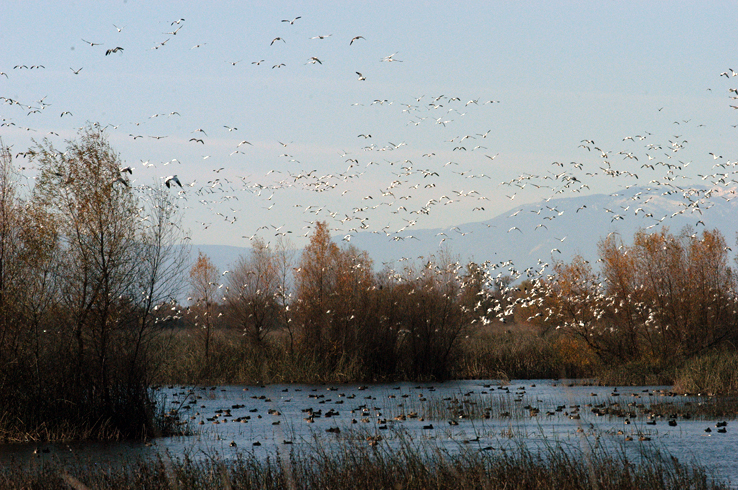Ducks, Geese Looking Good In DU’s 2017 Forecast

If Ducks Unlimited’s annual waterfowl forecast is an indication, there should be no shortage of birds in the Pacific Flyway.
Here’s what DU had to say about the Pacific Flyway:
The Pacific Flyway receives most of its waterfowl from the western United States and Canada, with the majority of ducks and geese coming from Alberta, British Columbia, the Yukon, the Northwest Territories, Alaska, and other western states. In southern Alberta, an estimated 6.4 million breeding ducks were surveyed this spring—a 28 percent increase from the 2016 estimate and 49 percent above the long-term average.
“The breeding season started with average to above-average spring runoff and cool, wet conditions that may have delayed early breeding efforts,” reports Ian McFarlane, a biologist with DU Canada. “Summer precipitation was near normal in the south, but temperatures have been high, which has decreased water levels. However, semipermanent wetlands remain full in the aspen parkland and Boreal transition zone. There was a good late hatch and numerous large broods have been reported by our field staff.” …
In the United States, above-average precipitation improved wetland conditions across much of the West following several years of severe drought. In California, improved production of mallards, gadwalls, and cinnamon teal was expected following one of the wettest winters on record. In Oregon, breeding duck numbers were similar to last year’s estimate and the long-term average, while in Washington, total ducks were up dramatically compared to both last year’s estimate and the long-term average.
The outlook is good for Pacific Flyway goose populations. Weather and habitat conditions were generally favorable for breeding geese in Alaska, and large fall populations of cackling, Ross’s, lesser snow, and white-fronted geese are expected. Surveys indicate that Pacific brant numbers were similar to last year’s estimates and the 10-year average.
Most waterfowl seasons in California get going in October.



